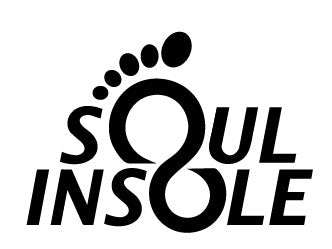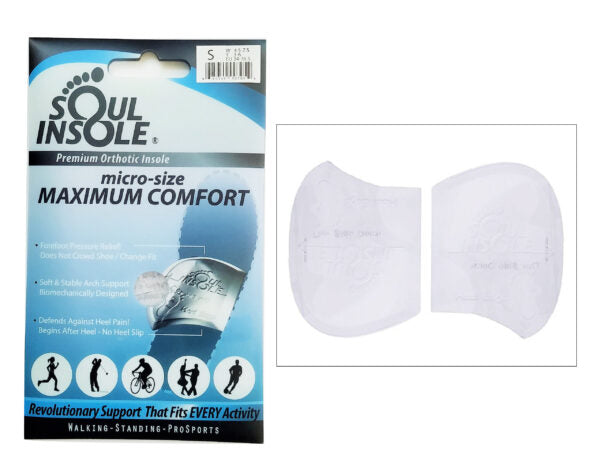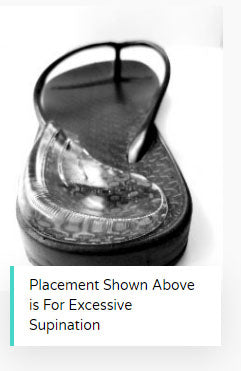Over Supination vs. Pronation
Do Your Feet Supinate? Do they Pronate?
Yes! During gait (walking/running), your feet will both supinate and pronate at different moments of your stride. Supination and pronation are both parts of a normal stride. Supination can be experienced during gait, when a person places their body weight on the outside of the foot while walking or running. The opposite is called pronation. Pronation occurs when a person shifts their weight more on the inside of the foot while standing, walking or running.

What is Over Supination / Excessive Supination?
Excessive Supination also known as over supination (or under pronation) occurs when the foot excessively leans to the outside edge while standing, walking and running. Take a look at the bottom of the shoes that you wear. If you have noticed that you tend to quickly wear out the outside corner of the heel edge of your shoes, this is a tell-tale sign of over supination. Effects of over supination can sometimes be felt in the feet, but more often the pain is felt in the knees and hips.
If the mechanics of your foot are even a little bit off, it can throw off the alignment for your entire body.
Excessive supination of your feet can lead to:
- back and hip pain
- stress on the knee
- ankle injuries
- inflammation of the sole, called plantar fasciitis
What Causes Over Supination / Excessive Supination?
- Inherited trait
- improper shoes
- misalignment of the body
- prior injury to the foot that damaged your tendons or muscles
Excessive supination may run in your family. Supination can also be related to weakness in certain muscles of your foot, ankle, and leg. Wearing rigid, tight shoes all the time can be a source of these problems. An over supinated foot cannot adapt properly to the surface it’s walking on, causing nearby bones and muscles to be required to work differently to maintain your posture and balance. Over time, this poor foot alignment can lead to tension in various parts of your body, including the ankles, calves, knees, hips, back, neck and even your shoulders. Prolonged tension often leads to injuries.
Some Knee and Ankle Pain Can Stem From Poor Foot Alignment
Knee and ankle pain can stem from several reasons which can include over supination, over pronation and poor foot alignment. If the joints are not perfectly aligned, the bones can grind on each other rather than smoothly gliding throughout the movement. Poor foot alignment can also impede your balance. This puts you at higher risk for twisting an ankle! No matter the reason which causes one’s knee or ankle pain, these problems are never fun. When having a problem with your feet, even if the pain is not felt directly in the feet, it can often mean you are experiencing discomfort with another part of your body.
Solutions for Over Supination
If you have already developed over supination or over pronation, there is no need to worry as there are existing solutions to overcome these problems.
If you supinate, it is recommended to wear flexible and lightweight running shoes. This can be one of the best solutions for those who supinate more. A lightweight shoe with the proper width, length, and depth that provides a good fit is a great option as part of a solution to prevent over supination. In addition to lightweight running shoes, certain types of orthotic inserts can be used within these shoes to get rid of over supination.
BEWARE, if the orthotics have arch support but do not have either a lateral heel wedge or a deep heel cup to provide a thicker amount of material on the outer side of the heel, they can actually make the condition worse by pushing the foot more to the outside. A heel wedge can be used alone or added to an arch support to stop over supination. Heel wedges are devices that rest under the heel and are designed to go from thickest on the outer edge and taper to thin on the inside (medial) edge. This design is important to help even out the foot, causing it to tilt more inward. Some shoe insoles that are designed for controlling supination can support your arch and support heel to control the motion of the foot. Since poor alignment, poor posture, and improper running techniques can cause over supination, you should definitely work to correct this. Physical therapy is also a good option to consider for correcting over supination.

What is Over Pronation?
Excessive pronation or over pronation is often identified by having flat feet or collapsing arches. When the arches are dropped, the ankles drop too, causing the tibia and fibula (leg bones) to rotate, which affects alignment in the joints all the way up the body. The ankles, knees, and back can ache as a result. It can cause major problems with your body’s alignment and lead to pain in the feet like plantar fasciits, arch pain and heel pain. It can also leave the body feeling less balanced. Proper foot alignment is very important, otherwise knee and ankle pain can stem from it.
Some over or under pronation is considered normal as no one’s body is perfectly symmetrical and balanced. However, if you pronate or supinate too much it will affect your normal gait cycle. A person can develop a pronation problem through genetic factors, poor posture, poor form, excessive exercise, arthritis, etc.
When your arch flattens and stretches, your muscles, tendons, and ligaments are strained. With over pronation, you may be at a higher risk of developing certain injuries including:
- plantar fasciitis
- ankle sprains
- shin splints
- achilles tendinitis
- heel spurs
- Metatarsalgia
- Post-tib Tendonitis
- Bunions
- heel or arch pain
- flat feet
- corns or calluses
- knee, hip, or back pain
- hammer toes
What Causes Over Pronation?
- Hereditary / inheritance of flexible, flat feet
- repetitive pounding on a hard surface
- Poorly designed footwear
- Pregnancy
- Obesity
Solutions For Over Pronation
One of the best ways to prevent over pronation is to correct your posture and foot alignment. Wearing shoe inserts, also called orthotics, can help you correct foot alignment while standing, walking and running. Orthotics can help you feel more comfortable while standing, lessen lower back or heel pain, and prevent muscular strains due to compensations in the pelvis or spine.
When you are looking to prevent over pronation in a natural way, you should look for thicker soled, firmer shoes with stability and “motion control”. Wearing motion control shoes or simply supportive shoes can help eliminate over pronation. If you do not have motion control shoes, you can add motion control with the use of orthotics. Look for an orthotic that has good arch support, maybe a slight rocker design and posting can be helpful as well. Posting is a shape that is thicker on the inside edge and tapers to thin on the outer portion under the heel. Stretching your legs more can also help improve this issue. Regular stretching of your legs, especially after workouts, can help increase flexibility, range of motion and blood flow in painful areas.
Here’s a short video of foot exercises that can help.
If your pronation problems become severe, consider physical therapy as it can help you to understand about the stretches and exercises recommended to retrain the lower extremities to balance weight properly.
This content is not intended to be a substitute for professional medical advice, diagnosis, or treatment. Always seek the advice of your physician or other qualified health provider with any questions you may have regarding a medical condition.
Erase Foot Pain For Good!





